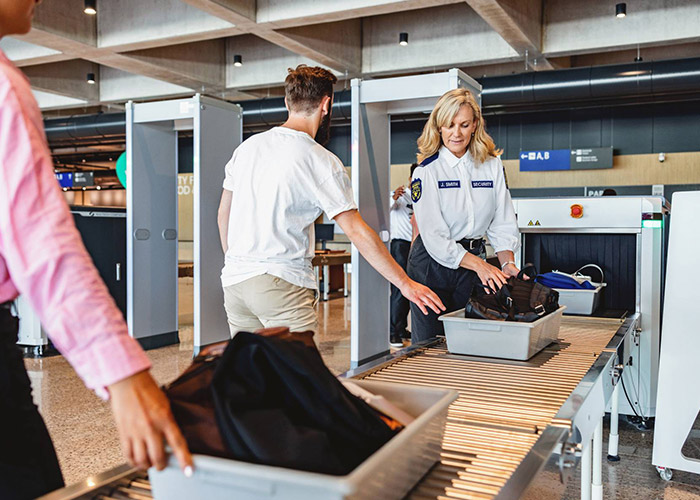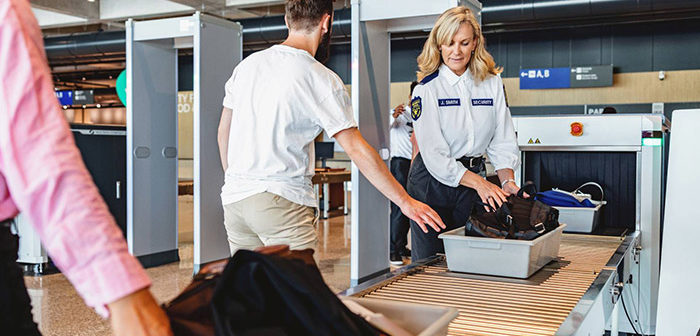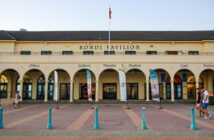
Three Queensland University of Technology researchers have teamed up to investigate how airport security screeners employ problem-solving techniques during x-ray screening and how strategies change with experience.
The study by Dr Levi Swaan, Adjunct Professor Vesna Popovic, and Dr Dedy Wiredya involved four groups of screeners with varying levels of experience. The researchers used eye-tracking to study the performance of the 39 security screeners during different visual inspection phases of a screening task.
Swann said the research was unique among most airport security screening research because it was conducted under normal task condition. “The typical practice is to conduct research in controlled environments,” he said. “The whole complexity of the task can be captured by conducting research in the field like this, and it has enabled us to identify problem-solving as essential to a security screener’s job. They use interface functions that, for example, change the visual appearance of images, and they also interact with other staff to help them make decisions, such as whether an object is a threat or not.”
Swann said that because research conducted in controlled environments did not include the environmental context, it focused on the visual scanning of images and the actual decision.
“We found that the extent of problem-solving performed during security screening differs for screeners based on their experience,” he said. “Less experienced screeners apply more problem-solving to make decisions. More experienced screeners can make decisions without problem-solving more often. We also found that the problem strategies employed by screeners change with experience. Less-experienced screeners rely on strategies that defer decision-making to another staff member or depend on a search-based strategy, which is a slow and weak approach to problem-solving that causes extraneous cognitive load.”
Swann added effective training in that task was essential due to its critical safety role. “Efficient training that enables fast skill development is also essential because the occupation has been associated with early staff attrition,” he said, adding that the study provided a basis for future research exploring how other factors, such as emotions and stress, can further affect screener performance.
Professor Popovic said their results suggested it took beginner screeners approximately six months of on-the-job experience to perform problem-solving at a similar level to experienced screeners. “Our results also suggest that problem-solving skills take longer to develop than other aspects of task performance, such as search, which involves the visual scanning of images,” she said.
Popovic also said the research findings were transferrable to other visual inspection tasks. “Visual inspection is standard in medicine, manufacturing, security, maintenance, and transportation,” she said. “Problem-solving should be explored in these areas to understand how improvements can be made to visual inspection. Given the significant variance observed in the screener’s performance according to the experience level and type, there is a strong case for defining specific screening criteria instead of depending on the generalist experience criteria.”
Popovic added that the research is transferable to other visual inspection training domains requiring expertise, such as port control, traffic control, surgical training, or X-ray examination.






